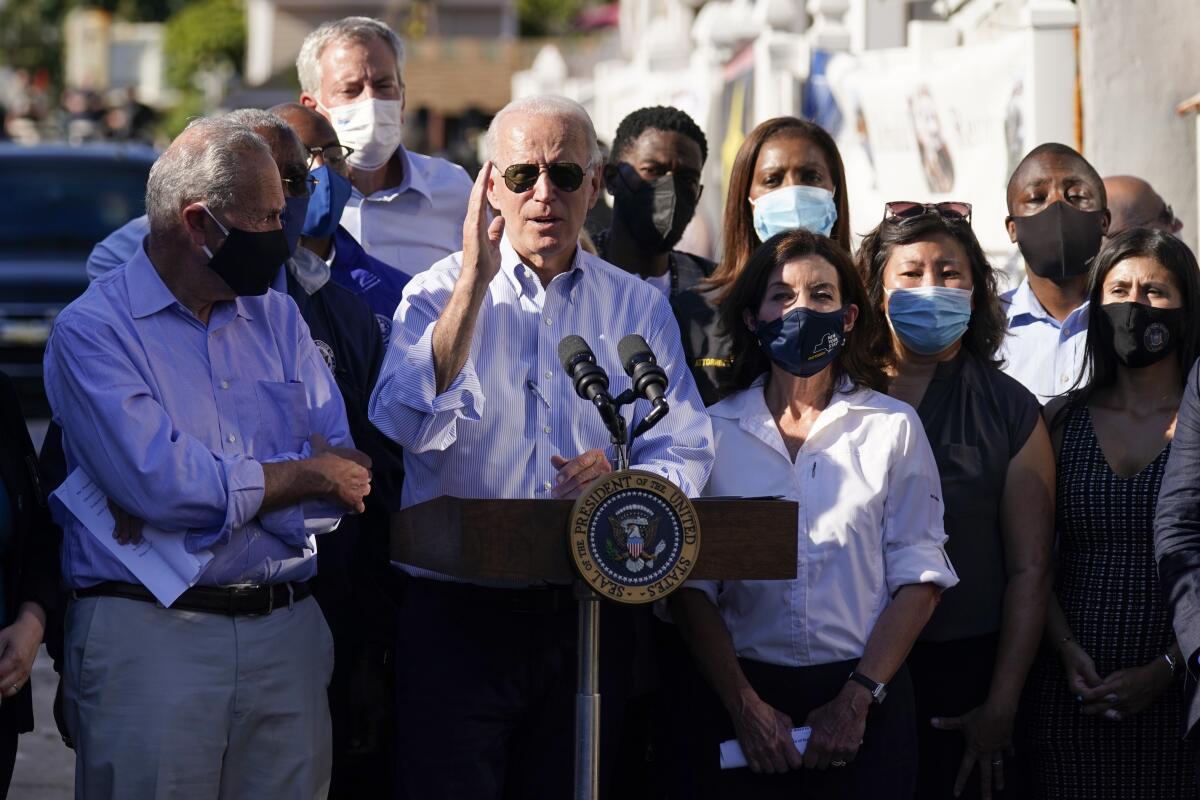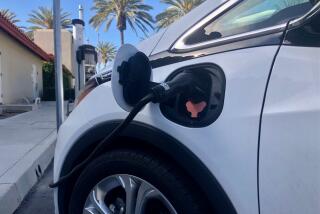Biden administration says solar could power 40% of U.S. electricity by 2035

WASHINGTON â Solar energy has the potential to supply as much as 40% of the nationâs electricity within 15 years â a tenfold increase over current solar output, but one that would require massive changes in U.S. policy and billions of dollars in federal investment to modernize the nationâs electric grid, a new federal report says.
The report by the Energy Departmentâs Office of Energy Efficiency and Renewable Energy says the United States would need to quadruple its annual solar capacity â and continue to increase it year by year â as it shifts to a renewable-dominant grid in order to address the existential threat posed by climate change.
The report released Wednesday is not intended as a policy statement or administration goal, officials said. Instead, it is âdesigned to guide and inspire the next decade of solar innovation by helping us answer questions like: How fast does solar need to increase capacity and to what level?â said Becca Jones-Albertus, director of the Energy Departmentâs solar energy technologies office.
Energy Secretary Jennifer Granholm said in a statement that the study âilluminates the fact that solar, our cheapest and fastest-growing source of clean energy, could produce enough electricity to power all of the homes in the U.S. by 2035 and employ as many as 1.5 million people in the process.â
The report comes as President Biden declared climate change has become âeverybodyâs crisisâ during a visit to neighborhoods flooded by the remnants of Hurricane Ida. Biden warned Tuesday that America must address the âcode redâ danger posed by climate change or face increasing loss of life and property.
Downpours and high winds from the remnants of Hurricane Ida slam East Coast
âWe canât turn it back very much, but we can prevent it from getting worse,â Biden said before touring a New Jersey neighborhood ravaged by severe flooding caused by Ida. âWe donât have any more time.â
The natural disaster has given Biden an opening to push Congress to approve his plan to spend $1 trillion to fortify infrastructure nationwide, including electrical grids and water and sewer systems, to better defend against extreme weather. The legislation has cleared the Senate and awaits a House vote.
The U.S. installed a record 15 gigawatts of solar generating capacity in 2020, and solar now represents about slightly more than 3% of the current electricity supply, the Energy Department said.
The âSolar Futures Study,â prepared by the Department of Energyâs National Renewable Energy Laboratory, shows that, by 2035, the U.S. would need to quadruple its yearly solar capacity additions and provide 1,000 gigawatts of power to a renewable-dominant grid. By 2050, solar energy could provide 1,600 gigawatts on a zero-carbon grid â producing more electricity than consumed in all residential and commercial buildings in the country today, the report said. Decarbonizing the entire energy system could result in as much as 3,000 gigawatts of solar by 2050 due to increased electrification in the transportation, building and industrial sectors, the report said.
The U.N. says global warming is likely in the next two decades to pass 1.5 degrees Celsius â the ambitious target of the 2015 Paris climate agreement.
To achieve such an increase, the U.S. must install an average of 30 gigawatts of solar capacity per year from now to 2025 â double its current rate â and 60 gigawatts per year from 2025 to 2030, the report said.
Abigail Ross Hopper, president and chief executive of the Solar Energy Industries Assn., said the study âmakes it clear that we will not achieve the levels of decarbonization that we need without significant policy advances.â
The solar group sent a letter to Congress on Wednesday from nearly 750 companies spelling out recommended policy changes. âWe believe with those policies and a determined private sector, the Biden administrationâs goals are definitely achievable,â Hopper said.
More to Read
Sign up for Essential California
The most important California stories and recommendations in your inbox every morning.
You may occasionally receive promotional content from the Los Angeles Times.












